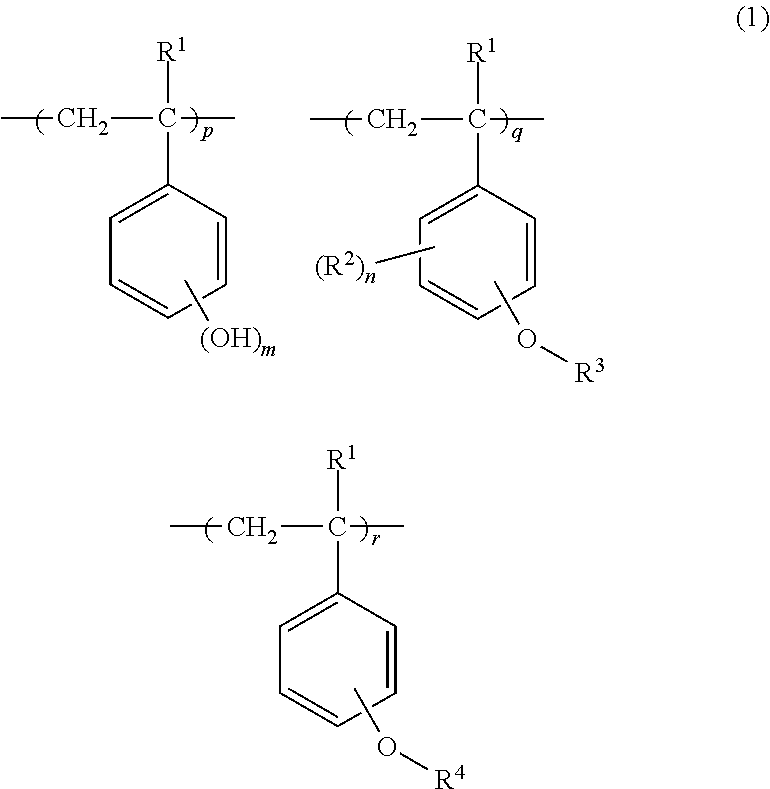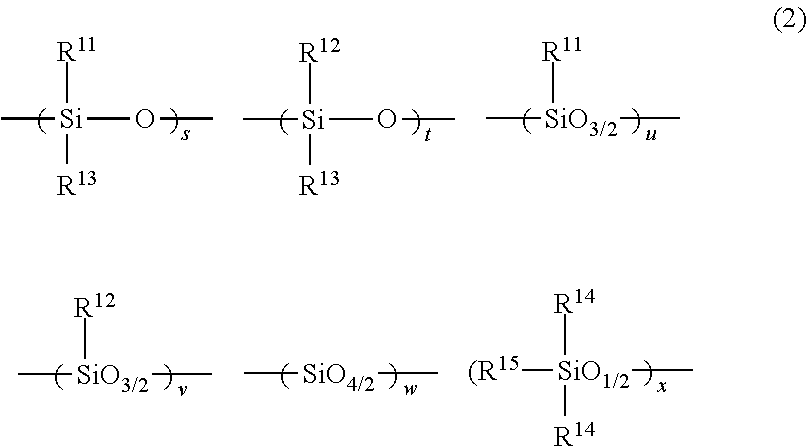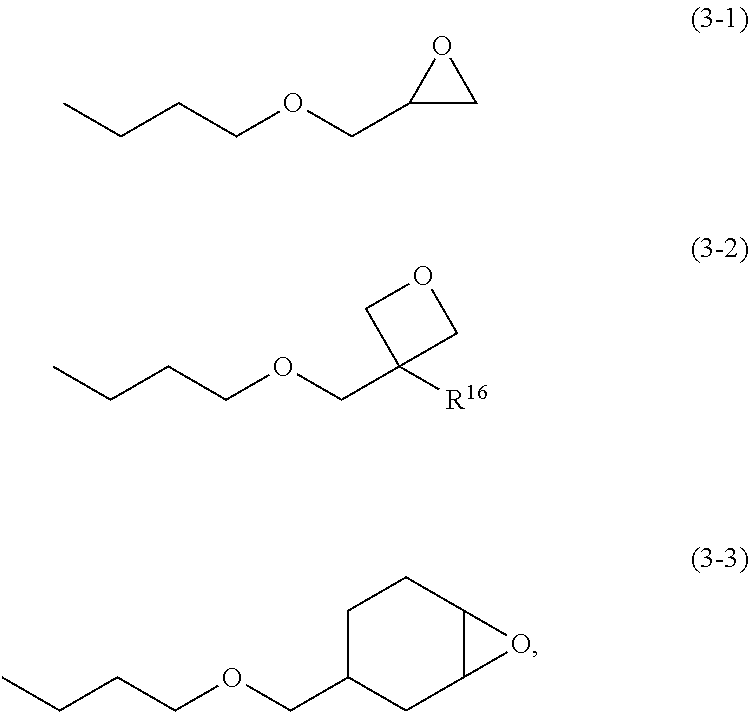Chemically amplified positive resist composition and pattern forming process
a technology of positive resist and composition, applied in the direction of photosensitive materials, instruments, photomechanical equipment, etc., can solve the problems of loss of film thickness, dimensional accuracy reduction, brittleness of cured film, etc., and achieve resolution, development and pattern profile, and satisfactory sensitivity.
- Summary
- Abstract
- Description
- Claims
- Application Information
AI Technical Summary
Benefits of technology
Problems solved by technology
Method used
Image
Examples
synthesis example 1
Synthesis of Siloxane Compound #1 of Formula (23)
[0124]A flask of 1 L volume equipped with a stirrer, cooling condenser, thermometer, and dropping funnel was charged with 305.4 g of 3-glycidoxypropyltrimethoxysilane, 204.0 g of methyltrimethoxysilane, and 48.0 g of methanol. While the contents were stirred at an internal temperature of 20-30° C., a mixture of 45.0 g of 0.05N hydrochloric acid and 10.5 g of methanol was added dropwise over 30 minutes. The reaction solution was ripened at room temperature for 3 hours.
[0125]Then, 10.6 g of 1 wt % sodium acetate in methanol was added to the reaction solution, which was ripened for 2 hours under reflux for polycondensation reaction. Thereafter, the alcohol and low-boiling fractions were distilled off by heating at an internal temperature of 55-60° C. under atmospheric pressure. Filtration gave a colorless clear liquid, which was Siloxane compound #1 of the following formula (23) (yield 90%). The number of silicon atoms in Siloxane compou...
synthesis example 2
Synthesis of Siloxane Compound #2 of Formula (24)
[0127]Polycondensation reaction was carried out as in Synthesis Example 1 aside from using tetraethoxysilane, 3-glycidoxypropyltrimethoxysilane, and methyltrimethoxysilane. Siloxane compound #2 of the following formula (24) was obtained as a colorless clear liquid (yield 95%). The number of silicon atoms was similarly determined, finding that Siloxane compound #2 was a pentamer.
[0128]
synthesis example 3
Synthesis of Siloxane Compound #3 of Formula (26)
[0129]A separable flask of 1 L volume equipped with a stirrer, cooling condenser, thermometer, and dropping funnel was charged with 138.0 g of methylhydrogenpolysiloxane having the structural formula (25) below and 69.0 g of toluene. Then a 0.5 wt % ethanol solution of chloroplatinic acid was added so as to give a platinum concentration of 50 ppm. Once the flask was heated at 80° C., 70.2 g of allyl glycidyl ether was slowly added dropwise to the solution in the flask at 80-90° C. Stirring was continued for one hour at the temperature. At the end of reaction, the solution in the flask was concentrated at 100° C. and a vacuum of 5 mmHg, obtaining a pale yellow clear liquid, Siloxane compound #3 of the following formula (26) (yield 95%).
[0130]
PUM
| Property | Measurement | Unit |
|---|---|---|
| reaction time | aaaaa | aaaaa |
| reaction time | aaaaa | aaaaa |
| reaction temperature | aaaaa | aaaaa |
Abstract
Description
Claims
Application Information
 Login to View More
Login to View More - R&D
- Intellectual Property
- Life Sciences
- Materials
- Tech Scout
- Unparalleled Data Quality
- Higher Quality Content
- 60% Fewer Hallucinations
Browse by: Latest US Patents, China's latest patents, Technical Efficacy Thesaurus, Application Domain, Technology Topic, Popular Technical Reports.
© 2025 PatSnap. All rights reserved.Legal|Privacy policy|Modern Slavery Act Transparency Statement|Sitemap|About US| Contact US: help@patsnap.com



